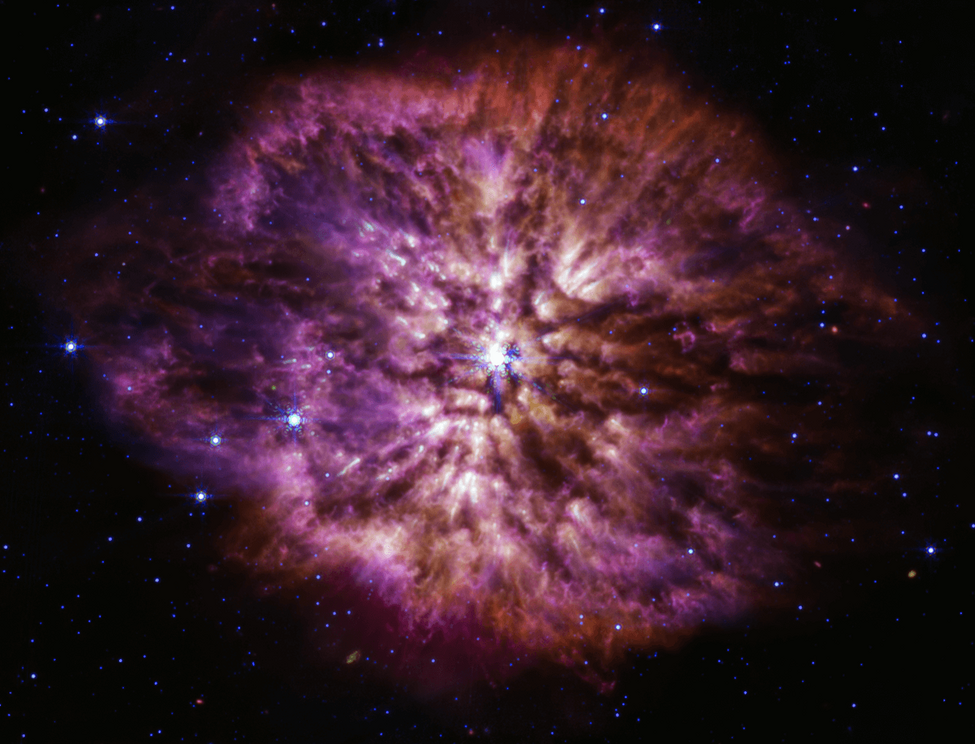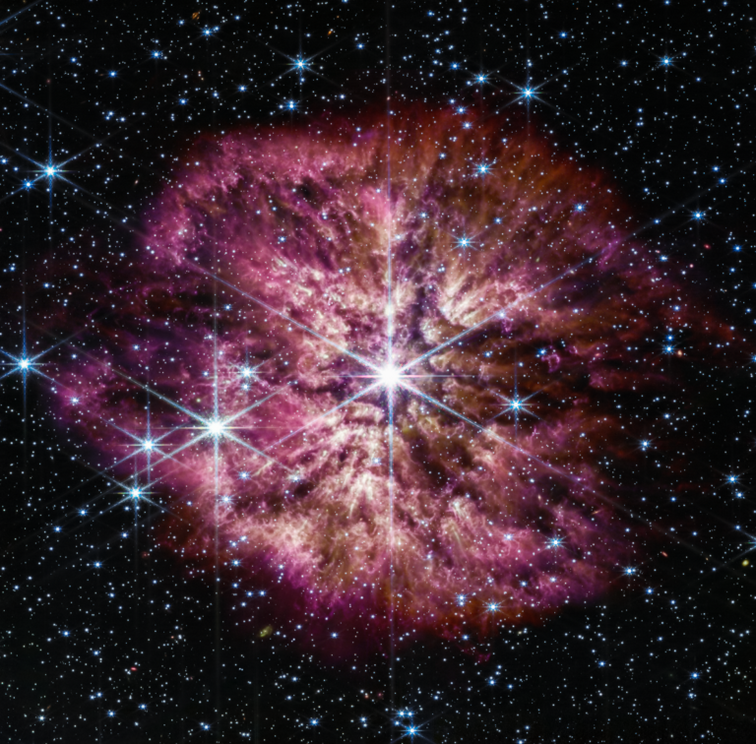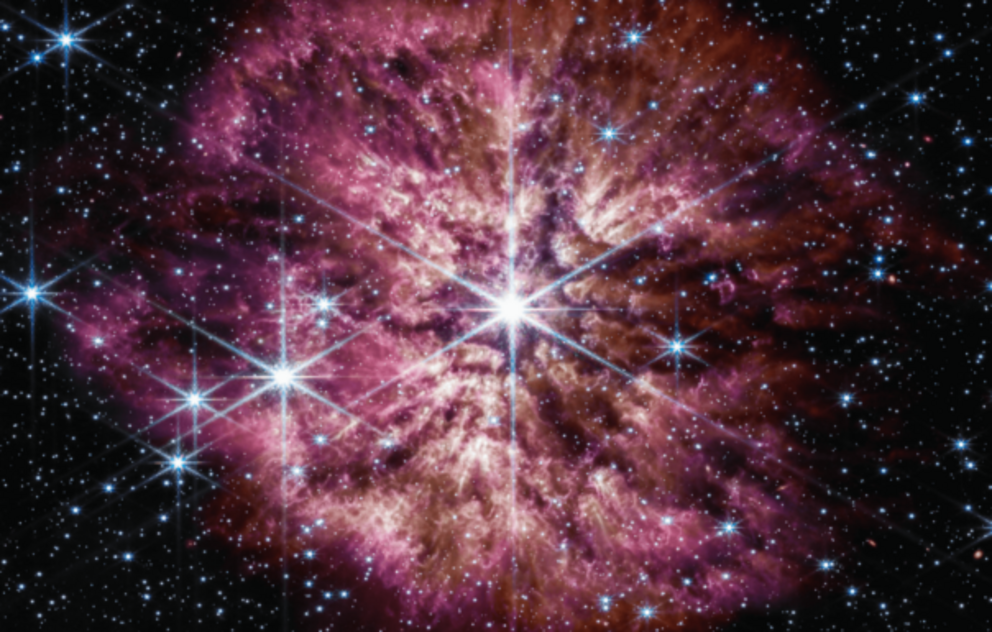JWST captures rare image of very brief moment in Wolf-Rayet star’s lifecycle
The luminous, hot star Wolf-Rayet 124 (WR 124) is prominent at the center of the James Webb Space Telescope’s composite image combining near-infrared and mid-infrared wavelengths of light from Webb’s Near-Infrared Camera and Mid-Infrared Instrument.
NASA’s James Webb Space Telescope (JWST) is revealing a very rare look at the Wolf-Rayet star—one of the brightest, most massive, and detectable stars in our known universe. Named WR 124, the star is 15,000 light-years away in the constellation Sagitta.
Massive stars have a fast lifecycle with only some going through a brief Wolf-Rayet phase before becoming a supernova. The JWST’s photographs of a Wolf-Rayet star give astronomers a valuable opportunity to study this star phase.
One of the features in a Wolf-Rayet phase is the star shedding off its outer layers, causing halos of gas and dust. The WR 124 star is 30 times the mass of our sun and has currently removed 10 Sun’s-worth of material. The JWST’s infrared instruments allow it to view the ejected gas moving away from the star and cooling into cosmic dust.
Cosmic dust from a growing sun contributes to the universe’s “dust budget.” Dust is important to the formation and maintenance of the universe. It protects budding stars and gathers them together to form planets. The dust also serves in creating a platform for molecules to clump together, creating the building blocks of life. Despite the multiple roles dust plays in space, there is still a surplus of cosmic dust floating around unused.
 Wolf-Rayet stars are known to be efficient dust producers, and the Mid-Infrared Instrument on NASA’s James Webb Space Telescope shows this to great effect. Cooler cosmic dust glows at the longer mid-infrared wavelengths, displaying the structure of WR 124
Wolf-Rayet stars are known to be efficient dust producers, and the Mid-Infrared Instrument on NASA’s James Webb Space Telescope shows this to great effect. Cooler cosmic dust glows at the longer mid-infrared wavelengths, displaying the structure of WR 124
The James Webb Space Telescope is creating opportunities for studying cosmic dust in more detail using infrared wavelengths of light. The JWST Near-Infrared Camera balances the brightness of WR 124’s stellar core with the blurrier details from faint and surrounding gas. The telescope’s Mid-Infrared Instrument has the ability to capture images of the clumpy structure of gas and dust nebula from the material stars eject.
Before Webb, astronomers did not have enough information to answer questions of dust production and whether dust grains made from WR 124 were large enough to survive the supernova. They also did not know whether the expelled cosmic dust made a significant contribution to the universe’s overall dust budget.
Viewing stars like WR 124 also helps astronomers understand the early history of the universe. Dying stars similar to WR 124 littered the young universe with heavy elements forged in their cores. These same elements are now common in present-day areas like planet Earth.
The JWST’s detailed image of WR 124 records a brief but turbulent time in the star’s transformation into a giant supernova. Now preserved in NASA’s database, the discovery is a stepping stone toward future discoveries surrounding the mysteries of cosmic dust.
 The luminous, hot star Wolf-Rayet 124 (WR 124) is prominent at the center of the James Webb Space Telescope’s composite image combining near-infrared and mid-infrared wavelengths of light from Webb’s Near-Infrared Camera and Mid-Infrared Instrument.
The luminous, hot star Wolf-Rayet 124 (WR 124) is prominent at the center of the James Webb Space Telescope’s composite image combining near-infrared and mid-infrared wavelengths of light from Webb’s Near-Infrared Camera and Mid-Infrared Instrument.

